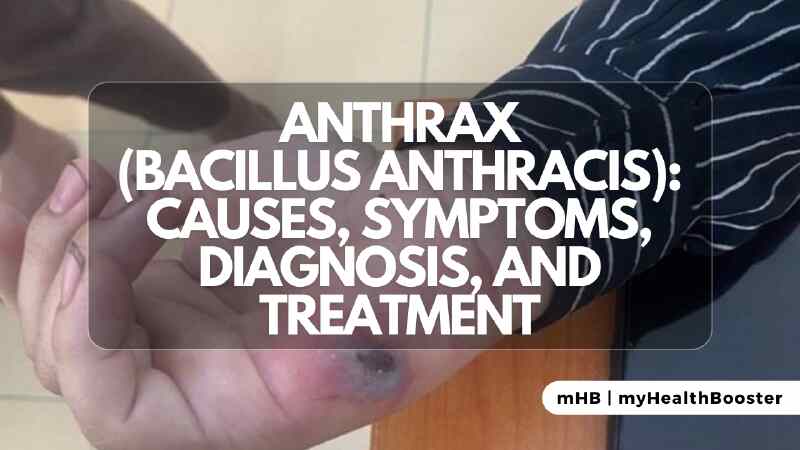Anthrax, caused by the bacterium Bacillus anthracis, is a serious infectious disease primarily affecting animals, particularly ruminants. While its transmission to humans typically occurs through contact with infected animals or their byproducts, the alarming potential for bioterrorist attacks or biological warfare has brought increased attention to this life-threatening ailment. This article provides detailed insights into anthrax, including its causes, symptoms, diagnosis, treatment, prognosis, and preventive measures.
Causes of Anthrax
Bacillus anthracis, the causative agent of anthrax, was identified by German physician and scientist Dr. Robert Koch. The bacterium primarily exists in a dormant form called spores in the soil, known for their resilience, with the ability to survive for up to 48 years. Anthrax is transmitted to humans through contact with infected animals or contaminated products. Recent occurrences have highlighted the potential release of anthrax spores from the melting permafrost, emphasizing the environmental implications associated with the disease.
Risk Factors and Transmission of Antrax
Anthrax is now relatively rare in developed countries, with occurrences more prevalent in areas lacking stringent public-health regulations. Those at higher risk include veterinarians, livestock producers, travelers to endemic regions, handlers of animal products, laboratory personnel, and individuals trained to respond to bioterrorism. The disease manifests in three primary ways: cutaneous, gastrointestinal, and inhalation anthrax, each with distinct symptoms and modes of transmission.
Symptoms and Manifestations
- Cutaneous Anthrax (80% of cases): Characterized by a raised spot evolving into an ulcer crater with a black crust (eschar), cutaneous anthrax presents with muscle aches, headache, fever, nausea, and vomiting. Timely antibiotic treatment is essential for a positive prognosis.
- Injection Anthrax: Newly identified in heroin-injecting drug users, this form exhibits symptoms such as small blisters, itching, fever, chills, and the development of deep abscesses. Early detection is crucial for effective intervention.
- Inhalation Anthrax: Initially presenting as flu-like symptoms, inhalation anthrax progresses to severe respiratory distress, chest pain, and, in some cases, coughing up blood. The prognosis for this form is often poor, emphasizing the need for swift medical attention.
- Gastrointestinal Anthrax: Rare but serious, this form results from consuming undercooked, contaminated meat, leading to symptoms like nausea, loss of appetite, bloody diarrhea, and fever.
Diagnosis and Treatment of Anthrax
While primary-care physicians can manage anthrax, consultation with infectious-disease specialists is recommended. Diagnosis involves assessing the patient’s history, occupation, and relevant tests, such as cultures, smears, and chest X-rays. Early treatment with antibiotics like penicillin, tetracycline, erythromycin, and ciprofloxacin is effective, particularly for cutaneous anthrax. Inhalation anthrax is a medical emergency requiring immediate and continuous intravenous antibiotic therapy.
Prognosis
The prognosis for anthrax infections varies based on the type and promptness of treatment. Inhalation anthrax has the poorest prognosis due to the challenge of neutralizing toxins released by the bacterium. Early intervention significantly improves outcomes for other forms of anthrax.
Prevention of Anthrax
Preventing anthrax involves public-health measures to reduce contact with infected animals. High-risk individuals may receive a vaccine, and ongoing efforts by organizations like the Department of Defense and the CDC aim to prevent bioterrorist attacks. Advances in vaccine development, including oral formulations, show promise for enhanced efficacy and ease of administration.
Conclusion
Anthrax remains a significant public health concern due to its potential for severe outcomes and its dual nature as a naturally occurring disease and a potential tool for bioterrorism. Understanding its causes, symptoms, diagnosis, and treatment is crucial for effective management and prevention in both endemic and potential bioterrorism scenarios. Ongoing research and preparedness efforts contribute to the global response against anthrax.
References
United States. Centers for Disease Control and Prevention. “Anthrax.” Jan. 31, 2017.
